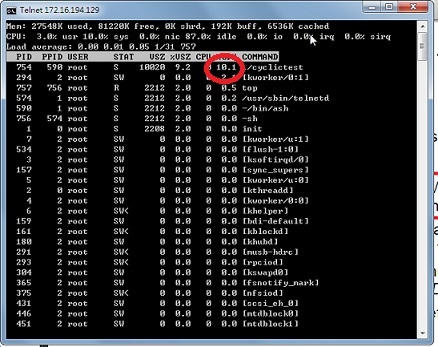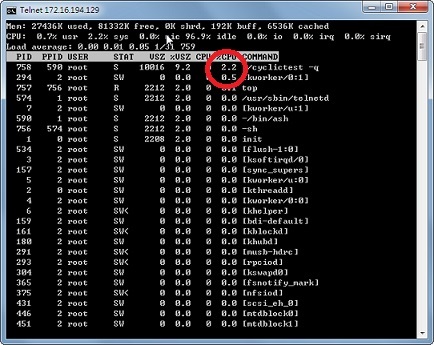I do a experimentation trying to prove that CPU loading of Linux top on OMAP-L138 is a trouble.
I use the newest original TI image(linux kernel 3.3.0) on Davinci 03_22_00_06.
http://software-dl.ti.com/dsps/dsps_public_sw/psp/LinuxPSP/DaVinci_03_22/03_22_00_06/index_FDS.html
# uname -a
Linux DA850EVM 3.3.0+ #1 PREEMPT Fri May 31 09:28:38 IST 2013 armv5tejl GNU/Linx
And I use the cyclictest, a benchmark tool on the Linux.
Cyclictest https://rt.wiki.kernel.org/index.php/Cyclictest
I find two special situation:
First, the loading(10%) of cyclictest on the OMAP-L138 is bigger than the other platform(almost less than 1%).
Second, if I add the "-q" parameter to cancel the monitor refresh of cyclictest every 10 msec, the loading is down to 2.2%.
I doubt the I/O driver of Linux or I/O architecture on OMAP-L138 have something wrong.
# ./cyclictest
# ./cyclictest -q
Could anyone explain this situation?
thanks





